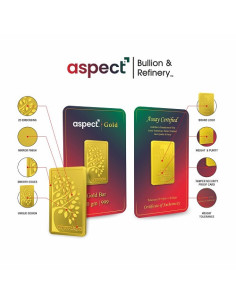Exclusive Deals & Trending Items
India’s gold import policies in india control how gold comes into the country. This affects travelers, traders, and investors. In 2023–24, gold came from 48 countries under indian gold import laws. Duties were applied based on Most Favoured Nation (MFN) or Free Trade Agreement (FTA) terms.
Knowing these rules helps avoid problems and cost changes. Customs duties vary by how much gold is imported. For up to 20 grams, it’s 0%. For more, it’s 3–10%.
Women travelers can bring up to 40 grams duty-free. Recently, import duties were cut from 15% to 6%. This cut gold prices by ₹4,000 per 10 grams, showing the economic effects.
Key Takeaways
- Customs duties depend on imported quantities, with exemptions for small amounts and female travelers.
- Recent duty cuts to 6% reduced gold prices, lowering landed costs by 7.7%.
- Indian gold import laws now tax ETF gains as long-term after 12–24 months of holding.
- Platinum alloy imports may decline as duty differentials shrink post-policy changes.
- MFN and FTA frameworks determine tariffs, impacting gold sourced from 48 countries.
Understanding the Significance of Gold in Indian Economy
Gold is important in India’s economy, mixing tradition with financial planning. It’s valued for its cultural significance and its role in the economy. This affects gold import policies in India and more.


Gold’s Cultural Importance in India
Gold is key in Indian life, especially during weddings, festivals, and religious events. Even when prices rise, 77% of buyers still want gold. It’s seen as both a beautiful adornment and a safe investment.
This demand makes the gold market worth $30 billion each year.
Economic Impact of Gold Imports
India gets 99% of its gold from imports, with only 2 tonnes produced locally. Gold import regulations try to manage this. For instance:
- ASEAN trade agreements allow 0% import duty on gold.
- India-UAE pacts impose 5% duty on gold bullion and 4.35% on gold dore.
- Rising prices strain foreign reserves, widening the current account deficit by billions.
Higher costs also push interest rates and inflation, affecting household budgets.
The Gold Market Size in India
India’s gold demand is around 895 tonnes a year, making up 26% of global demand. The industry supports 2.5 million jobs. Recycling has increased, showing a chance to reduce import needs.
Historical Evolution of Gold Import Policies in India
India’s gold import policy updates have greatly influenced gold trade in the country. These indian gold import laws have changed over time, reflecting the nation’s economic goals. Let’s look at the major events that have shaped this sector.
| Year | Policy Change |
|---|---|
| 1947 | FERA enacted to restrict gold imports and stabilize foreign exchange. |
| 1968 | Gold Control Act imposed strict import limits, boosting smuggling. |
| 1990 | Act revoked, allowing free imports taxed at 4% to curb black markets. |
| 2014 | Import duty cut to 1%, ending the 20:80 rule and introducing Sovereign Gold Bonds. |
| 2024 | July’s budget reduced duties to 6%, addressing smuggling and boosting transparency. |


After 1990, India moved towards market-driven policies. By 2014, the 80:20 rule was abolished, focusing on tax revenue. The 2024 duty cut aims to reduce smuggling and promote economic growth. These changes show a long journey from strict controls to flexible policies.
- 1960s: Strict controls led to smuggling crises.
- 1990s: Liberalization boosted legal gold trade.
- 2020s: Digital tools like GeM and GST integration modernize compliance.
Today, policies combine historical wisdom with modern technology. As duties change, traders adjust to new indian gold import laws. This ensures a balance between fiscal goals and market needs.
Current Gold Import Regulations in India: An Overview
Understanding current gold import policies in India is key. It involves knowing the gold import regulations. These rules aim to keep the economy stable and meet market needs. Let’s explore what makes up today’s framework.
Key Regulatory Bodies Overseeing Gold Imports
- Directorate General of Foreign Trade (DGFT): Oversees policy implementation and license approvals.
- Reserve Bank of India (RBI): Monitors cross-border transactions and liquidity.
- Central Board of Indirect Taxes and Customs (CBIC): Manages customs duties and compliance.
Major Policy Frameworks in Place
Customs duties change based on gold type and form. Here’s how they work:
| Type | Customs Duty |
|---|---|
| Bullion | 6% |
| Gold Dore (unrefined) | 5.35% |
These rates are for Most Favoured Nation (MFN) terms. They’re part of gold import regulations to fight smuggling and stabilize markets.
Recent Amendments to Gold Import Laws
- In the current gold import policies, the 2024 budget cut duties from 15% to 6%. This boosted legal imports by 49% YoY.
- The 2015 Gold Deposit Scheme encourages recycling gold to reduce imports.
- November 2024 saw imports hit 173 tonnes, showing policy success in reducing smuggling.
These updates aim to match policies with market needs. They ensure transparency and economic balance.
Who Can Import Gold into India?
In India, only certain groups can legally bring gold into the country. These groups must follow strict rules set by gold import regulations. Here’s what you need to know:
Authorized Dealers and Nominated Agencies
Only banks and public sector companies can import gold. They need to:
- Have a valid license from the Bureau of Indian Standards (BIS)
- Make sure refineries are NABL-accredited
- Follow HS code 71081200 for gold dore imports
Requirements for Private Importers
Private businesses have to do the following:
- Get an Importer-Exporter Code (IEC) from DGFT
- Get a BIS license and RBI approval
- Submit documents like Commercial Invoice and GATT declaration
Restrictions on Individual Gold Imports
There are limits on how much gold travelers can bring in. These limits depend on where you live and if you’re a man or woman. Here’s how it works:
| Category | Conditions |
|---|---|
| Residents | Women: 250g limit |
| Non-residents | 200g maximum per entry |
| All travelers | Must declare imports to customs |
Companies trying to sneak gold in by calling it platinum alloy will face big penalties. Always check RBI rules and follow HS classifications to stay out of trouble.
Gold Import Duties and Taxation Structure
In India, gold import duties are key to gold import policies in india. They affect the cost for both travelers and businesses. The rules depend on how much gold you bring and who you are.
- Baggage Rules (2016): Men get 20g duty-free; women 40g. Excess amounts face escalating rates.
- Customs duties: 3% for 20-50g (men) or 40-100g (women). 6% applies to 50-100g (men) or 100-200g (women. Over these limits? 10%.
- Recent changes: The 2024 budget slashed import duties from 15% to 6%, easing costs for bulk buyers.
Special rules apply to findings and coins. As of January 2024, these items now face 15% duty (10% BCD + 5% AIDC). Travelers returning after six months can import 1kg if paying full duty. GST (3% on landed cost) is added at the final sale point.
These policies ensure clarity while balancing revenue needs. Check limits carefully to avoid penalties. The 2024 reforms aim to simplify compliance while curbing evasion, keeping markets stable despite rate hikes on certain items.
Understanding the 80:20 Rule and Its Impact
The 80:20 rule was introduced in August 2013. It was part of indian gold import laws to control the country’s gold imports. The rule made importers send back 20% of their gold to cut down the trade deficit.
At first, only banks and public sector units followed this rule. But in 2014, it was opened to private traders too. So, how did this rule affect things?
Authorized dealers brought in gold but had to send 20% back. This move helped reduce the current account deficit at first. But, it had its problems.
The policy was seen as a way to hide money, leading to big financial scandals. Cases like those of Mehul Choksi and Nirav Modi showed its dark side. The Comptroller and Auditor General found a huge loss of ₹1.3 lakh crore due to these issues.
- Introduced in 2013, repealed in 2014
- Caused a 40% rise in monthly imports by private entities
- Linked to Rs 840 per 10g price surge post-repeal
After the rule ended in 2014, gold import restrictions in india changed. Imports went down at first, but experts say they will go up again. The rule’s story teaches us about the balance between economic rules and watching over them in indian gold import laws.
For those who buy gold, the rule’s end brought more ups and downs. It shows how policies can affect both markets and people’s values.
Gold Import Procedures: Step-by-Step Guide
Understanding gold import procedures in india is key. Begin by getting an Import Export Code (IEC) from DGFT. This is required by the Foreign Trade Act of 1992. Here’s what to do next:
- Log into the official application using OTP-based authentication via email or mobile.
- Fill mandatory fields: IEC number, RCMC details (if applicable), and item specifics like quantity and value.
- Upload documents: NABL/BIS certifications, bank statements, and KYC proofs. Make sure they meet current gold import policies for fund source verification.
- Pay online fees via net banking or UPI. Choose your jurisdictional Registration Authority (RA) from the dropdown.
- Submit the application and track status online. Get confirmation via email/SMS once approved.
Before you start, you need a few things:
- RBC (Reserve Bank of India) approval for gold dore imports.
- Factory license and pollution control NOC for refineries.
- Udyog Aadhaar or DIC for business registration.
Working with agencies like CorpZo can make things easier. They offer:
- IEC/RCMC registration
- Customs clearance coordination
- Risk management and market insights
Always check hallmarking standards with BIS and confirm GST compliance. Keep up with DGFT notifications to avoid fines. Whether using the OGL route or nominated agencies, follow anti-money laundering rules. Keep all documents current for smooth customs clearance and market entry.
Documentation Required for Importing Gold to India
When you bring gold into India, you need the right gold import procedures in india paperwork. Following gold import regulations helps clear customs quickly and avoids problems. Here’s what you must prepare.
Essential Permits and Licenses
First, get important permits like Import Export Code (IEC) and Bureau of Indian Standards (BIS) certification. New importers need NABL certification. Businesses must have valid factory licenses and Pollution Control NOC. You’ll need:
- BIS Hallmarking License
- Udyam Registration (formerly MSME)
- RBI’s Foreign Trade Policy Compliance Certificate
Customs Documentation Requirements
Customs needs specific forms for your shipment. You must submit:
- Commercial invoice and packing list
- Bill of entry with accurate HS codes (7107 for gold)
- Certificate of origin from the exporting country
- Bank guarantees for duty-free imports
KYC and Other Compliance Documents
Know Your Customer (KYC) rules are strict. You’ll need:
- PAN card and Aadhaar for sole proprietors
- Partnership deed or company MOA for businesses
- Past three years audited financial statements
- Bank statements and creditworthiness reports
Also, include export contracts and GR forms to show export duties. You might need indemnity bonds and collateral from STC or HHEC.
Restrictions on Gold Import: What You Should Know
Knowing about gold import restrictions in india helps clear your shipments smoothly. Travelers must follow strict limits to avoid extra taxes or legal trouble. Here’s what you need to know:
| Category | Duty-Free Allowance |
|---|---|
| Male Travelers | 20 grams |
| Female Traveler | 40 grams |
| Children Under 15 | 40 grams (requires purchase proof) |
You can bring up to 1 kilogram of gold without paying basic customs duty. But, going over these limits means facing indian gold import laws penalties like extra taxes. For instance:
- Basic Customs Duty (BCD) ranges from 3% to 10%.
- Agriculture Infrastructure Development Cess (1% for gold bars).
- IGST (3%) applies in some cases.
Always carry purchase invoices with purity, price, and date details. Gold must be 22 karat purity. Breaking these rules could result in seizure or fines. Keep up with gold import restrictions in india on official government sites for compliance.
Recent Changes in Indian Gold Import Policies
It’s crucial to stay updated with gold import policy updates for businesses and buyers. Recent changes in current gold import policies aim to balance the market and meet consumer demand. Here’s what you need to know:
“These measures will ensure gold remains affordable while supporting domestic manufacturing,” said Finance Minister Nirmala Sitharaman during the 2024 budget announcement.
Key policy shifts since 2021 include:
- A customs duty drop from 15% to 6% for gold, reducing landed costs by 7.7%.
- Lower tariffs for gold doré (from 14.35% to 5.35%) to boost refining in India.
- A 50-ton expected rise in H2 2024 demand due to duty cuts.
The pandemic led to temporary easing of documentation norms to stabilize supply chains. Now, as economies recover, the focus is on long-term reforms. For example, the holding period for gold-related capital gains was shortened from 36 to 24 months, making tax compliance easier.
Looking ahead, officials hint at further tweaks to align with global markets. With India’s gold imports hitting a 20-year low of 15 metric tons in February 2025, policymakers aim to encourage local manufacturing through incentives. Regular tariff revisions, like the recent $11 per 10g tariff drop, reflect efforts to keep prices competitive.
These gold import policy updates not only affect traders but also influence retail prices. Keeping track of these changes ensures compliance and helps you capitalize on market opportunities.
How Gold Import Policies Affect Consumers
When gold import duties change, you might notice immediate shifts in local gold prices. For instance, after recent duty reductions, prices fell by ₹4,000 per 10 grams. This shows how these policies directly impact your wallet.
- Price swings tied to gold import policies in india influence affordability for weddings, festivals, or investments.
- Retailers adjust prices based on import costs, so your jewelry purchases might depend on timing—like buying before budget announcements.
- Higher duties create local market premiums, while lower duties can slash costs, boosting your buying power.
Recent data reveals a 6% month-over-month price drop after duty cuts, making gold more accessible. But when duties rise, retailers may pass costs to consumers, pushing prices higher. Festive seasons see retailers stockpiling gold ahead of demand spikes, affecting availability and pricing. With ₹13.4 billion flowing into gold ETFs this year, many are shifting to paper gold when physical options become pricey. The Reserve Bank of India’s 44.3t gold purchases also signal how policy shifts ripple through markets.
Stay alert to gold import policies in india changes—they shape not just what you pay, but where and how you invest. Whether you’re buying jewelry or saving, policies shape every decision. Keep an eye on duty trends to make smarter choices.
Gold Import Through Special Economic Zones (SEZs)
India’s Special Economic Zones (SEZs) make gold import procedures in india easier for businesses. They cut down on costs and make things simpler. This makes SEZs a great choice for jewelers and traders.
Importers in SEZs get special benefits. They can enjoy lower duty rates and faster clearances thanks to policies like the India-UAE CEPA.
Special Provisions for SEZ Importers
- Imports under the 80:20 scheme qualify for concessional duties via the CEPA, with a 1% duty reduction on specified quantities.
- SEZ units can import gold using Bullion Depository Receipts (BDRs) through the IIBX platform in Gujarat.
- Entities must adhere to HS codes 71131911 and 71141910, as outlined in DGFT Policy Circular 03/2023-24.
Tax Benefits and Considerations
SEZ participants get special tax breaks. These include:
- Customs and excise duty waivers for gold stored in SEZ vaults.
- Ability to sell up to 100% of imported gold within SEZs or under the Domestic Tariff Area (DTA) framework.
- Monthly reporting requirements to the RBI via Authorised Dealers (ADs).
“SEZs reduce compliance costs by up to 30% due to simplified gold import regulations.”
Procedure Differences from Regular Imports
SEZ imports have three main differences:
Process streamlining:LCs under EXIM Policy 2002-2007 can be processed in 5 working days, versus 14 days for standard imports.Documentation:Reduced paperwork via digital portals like IIBX, eliminating physical form submissions.Flexibility:Gold can be stored in SEZ vaults before resale, avoiding upfront local taxes.
Operators must ensure LC usance periods stay under 90 days and comply with anti-money laundering norms. For more details, refer to DGFT Circular 03/2023-24 dated 14 July 2023.
Compliance and Penalties for Violation of Gold Import Laws
Following indian gold import laws closely is a must. Breaking these rules, like not reporting the right amount or value, can cause big problems. The government is strict with gold import restrictions in india to stop smuggling and keep taxes coming in.
- Not telling customs about gold leads to it being taken away right away, with fines that match the gold’s value.
- Smuggling gold worth over ₹1 lakh can get you up to 7 years in jail under Section 135.
- Those who keep breaking the rules could face life in prison under the 2023 Bharatiya Nyaya Sanhita for big violations.
In 2023, Ranya Rao and Tarun Raju were charged for smuggling 14.6 kg of gold without declaring it. This led to their assets being taken and fines. This shows how serious it is to follow the rules. Not following gold import restrictions in india could also lead to being charged under the UAPA if it messes with money stability, which could mean anti-terror penalties.
To stay out of trouble, do this:
- Always tell the truth about what you’re bringing into the country.
- Keep good records for when the government asks to see them.
- Don’t do any secret deals under FERA 1973 to avoid getting hit with Section 7A penalties.
If you think you’ve been unfairly penalized, you can appeal to the Customs, Excise & Service Tax Appellate Tribunal. Paying duties on time and following Baggage Rules 2016 can help you avoid legal trouble. Make sure any advance payments are backed up properly to avoid Section 7A.10 problems.
Conclusion: Navigating India’s Gold Import Landscape
India’s gold import policies in India balance cultural love for gold with economic needs. The 2022 duty cut from 12.5% to 6% shows efforts to boost demand and control trade deficits. With 25% of global gold demand, these current gold import policies influence market trends.
For example, lower duties in 2023 led to more purchases. But, imports dropped 63% in 2025 due to price changes.
Whether you’re a jeweler, investor, or traveler, knowing the rules is key. SEZs offer tax breaks, and the Gold Monetization Scheme mobilized over 30 tonnes by 2024. This shows other ways to manage gold demand.
Government programs like Sovereign Gold Bonds aim to cut physical imports. This affects prices and how much gold is available.
Keep an eye on policy changes. The Reserve Bank of India and Jewelers’ Association of India share updates on duties and rules. For specific advice, talk to customs brokers or legal experts who know gold import policies in india. By following these changes, businesses can thrive in this fast-changing field.




















